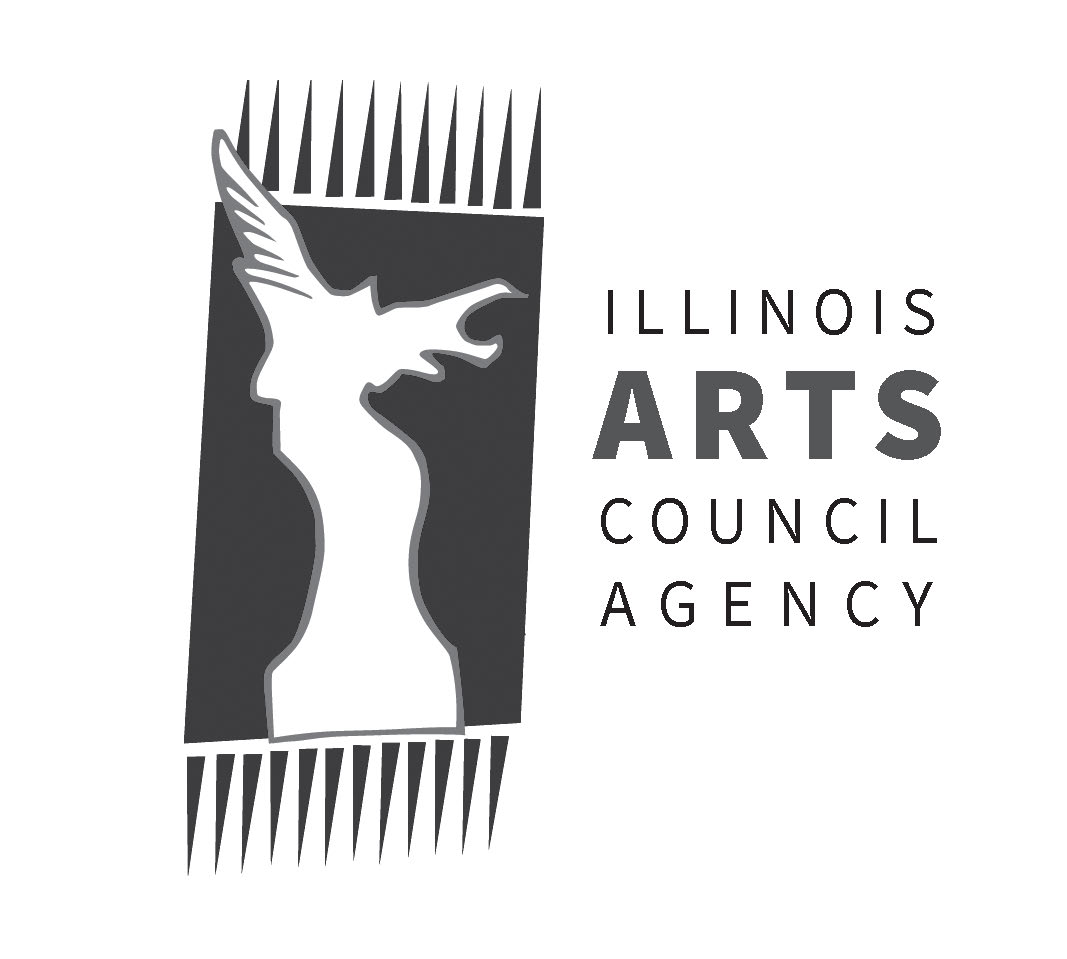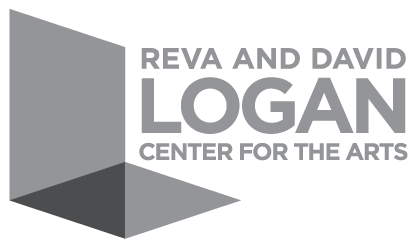“There is so much beauty in my everyday life, and so with this film I wanted to focus on that beauty specifically. My personal experience living on the west side of Chicago, Illinois with my family and friends and what makes it so rich.”
“Only eighteen percent of concertmasters are women. Only four percent of musicians in major American orchestras are black or latino.”
“I wanna shout out my skateboard.”
“I realized in society today, slavery still exists.”
“This is for when we are Olympians.”
“Once you come in contact with art, you are art itself.”
These are quotes from the final films and artist statements for Art Options, an Urban Gateways summer filmmaking apprenticeship program started in 2009 for high school sophomores and above. This July, the 11 selected Art Options students could be found not watching TV, out with their friends skateboarding or at the beach, or toiling away at mindless jobs, but on the University of Chicago campus at the Reva and David Logan Center for the Arts.
From the outside of the Logan Center, a prestigious, intimidating building with its sleek grey design and long, concrete hallways featuring occasional breaths of light, one might expect to see the next blockbuster thriller filming down the hall.
On the inside, the Art Options students were hard at work in the state-of-the-art media labs and classrooms, committed to studying the history, theory, techniques, and impact of film.
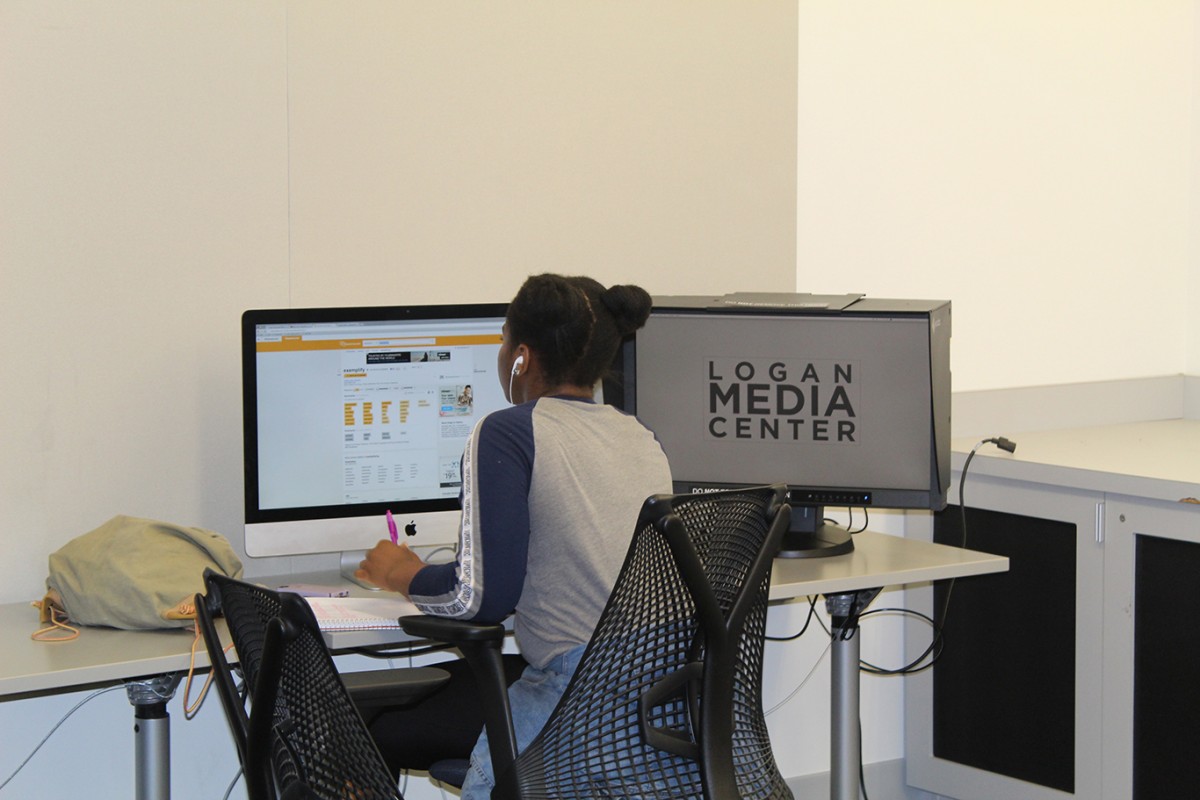
Student Damali doing research for her film
The students studied and worked under the guidance of teaching artists and educators Eunsong Angela Kim, Oli Rodriguez, Maya Mackrandilal, and Gonzalo Reyes. For the first three weeks of the program, the curriculum was designed like a college-level seminar course, complete with viewing contemporary films, reading and dissecting a 129-page packet of assigned academic articles on film studies as well as critical race and gender theory, and engaging in enriching conversations with a variety of guest artists. Then, the program took a turn for the hands-on; students learned film skills and techniques, from shooting to editing and post-production.
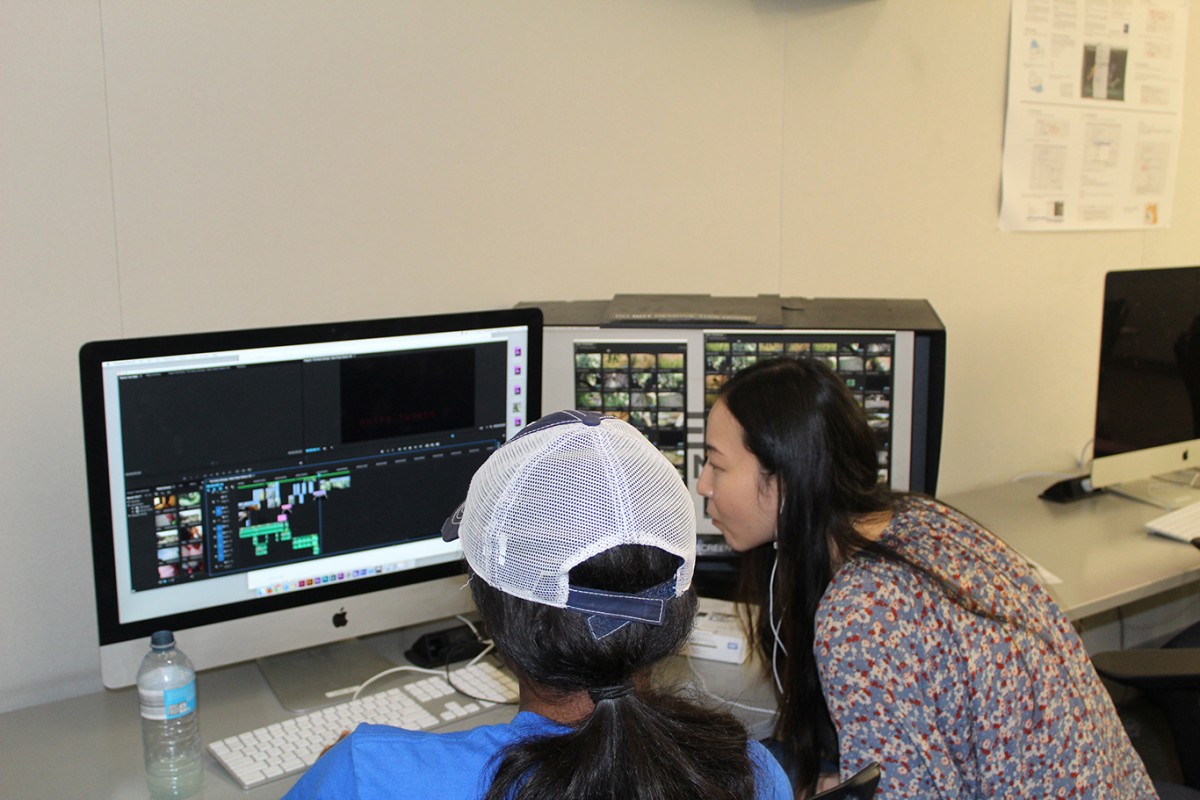
Teaching artist Eunsong Angela Kim looking over student Mariah’s storyboard and film
The program’s intense curriculum, and the nightly 10-14 page academic readings in particular, were an adjustment when program returnee Justus White, who first participated in the program when he was 16, arrived for his first summer at Art Options. It’s this college preparation, though, that he credits for getting him to where he is today.
“Learning to read these articles, to critically analyze art – poetry, film, and learning post production – it was vital college preparation.”
Now, one of Justus’ dreams is to open a production company for Chicago youth in marginalized communities, to equip them with similar creative opportunities.
Art Options is about a lot more than learning to film and preparing for college, however. It asks students the deeper questions that get at the heart of art and critical thinking: Why do we make art? What has been done before, and how should it be done differently? For their last guest artist talk, the students welcomed activist and freelance writer William C. Anderson, and discussed his piece “From Lynching Photos to Michael Brown’s Body: Commodifying Black Death”, included in their assigned reading. The talk centered around the objectification of people in film, especially of black men and boys killed by police, and the ethics of mass circulation of these images by the media and the internet. The students did not shy away from these dark and complex topics that, as William himself said, are often traumatizing. They discussed their own experiences in viewing the mass reproduction of these images, they brainstormed possible counter actions – one being combating the “thug” and “criminal” media labeling with positive, realistic images of victims that celebrate their lives – and asked William thought-provoking questions. Reflecting on concepts the students learned from studying bell hooks, one of the students asked: In “The Oppositional Gaze” we learned about a normalized gaze. If the norm is the gaze that’s shaped by oppressive societal structures, when we go to film, what type of gaze should we have?
His response? “A compassionate gaze.”
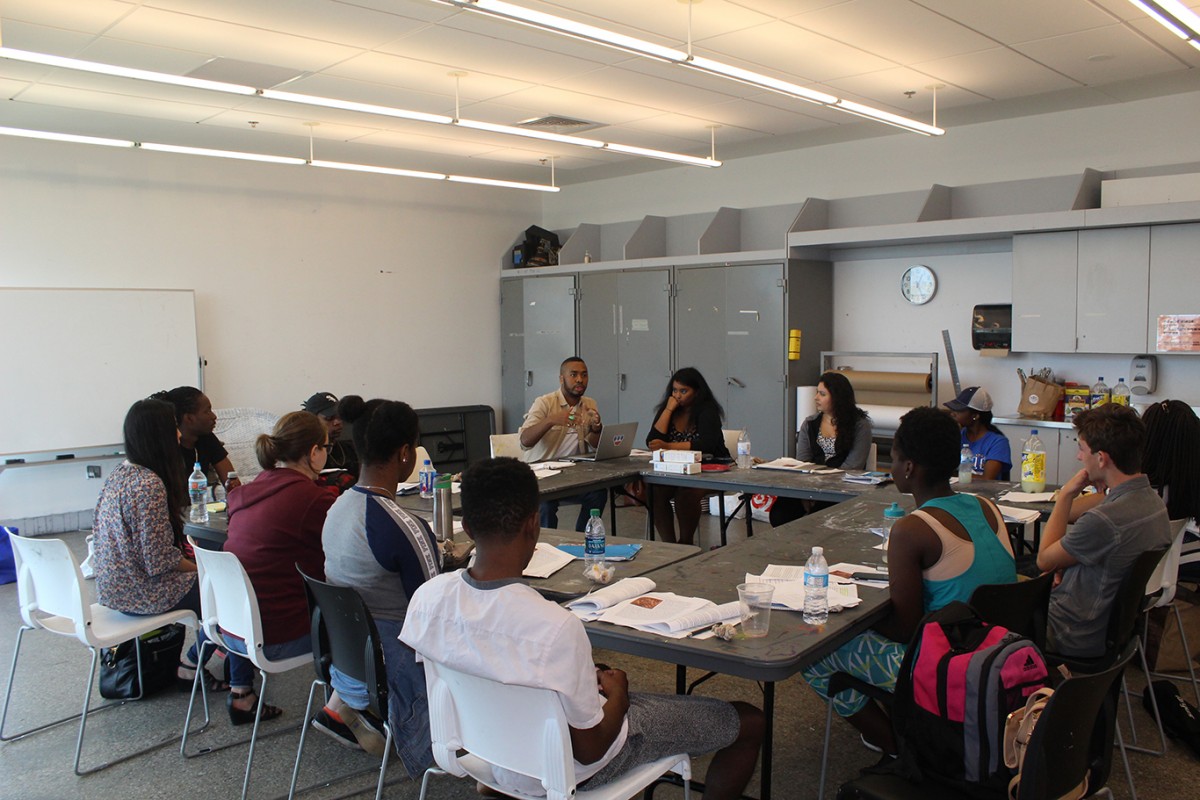
Students deep in discussion with William
For their final projects, the students put all their percolating ideas, inspiration, and new skills into dreaming up, writing, filming, and producing their own short films. On Saturday, July 30th, it culminated in a public screening – an opportunity to honor the hard work of some of Chicago’s future filmmakers, leaders, critics, and innovators with family and friends.
From dreamy shots of Chicago’s neighborhoods through the perspective of a familiar El ride, to running through the streets with Black Lives Matter protesters as sidewalk drummers play and crowds jump in tandem, chanting ‘We Gon’ Be Alright’, to poetic readings of Malcolm X and Nina Simone’s “Strange Fruit” over eerie shots of trees and footage of the KKK, the Art Options students took their audience on a wide variety of bold and honest journeys.
One film exposed the lack of gender and racial diversity in orchestras; another took to the track and asked people why they run; one called for the celebration of natural black hair; there was even a twenty-minute long horror film. The audience laughed during one student’s candid footage of his family at a barbecue, and two young siblings of another student pointed at themselves on screen, running freely through the lakefront sand, and said, “That’s me!” Students took on topics from cultural appropriation and systemic oppression, to paying an homage to one’s trustworthy skateboard.
Art Options student Celeste Coleman, who will be attending Harold Washington College in the fall, and whose brother, Michael, is an Art Options returnee, says that her experience has made her rethink her choice to pursue the viola in college. “I think I might want to be a filmmaker instead”, she said. “And I could put my music in my films.”
Her film, Savage, takes inspiration from the novel Beloved and the speeches of Malcolm X, and follows a slave escaping her master through shots of her friend moving through Chicago with contemporary dance.
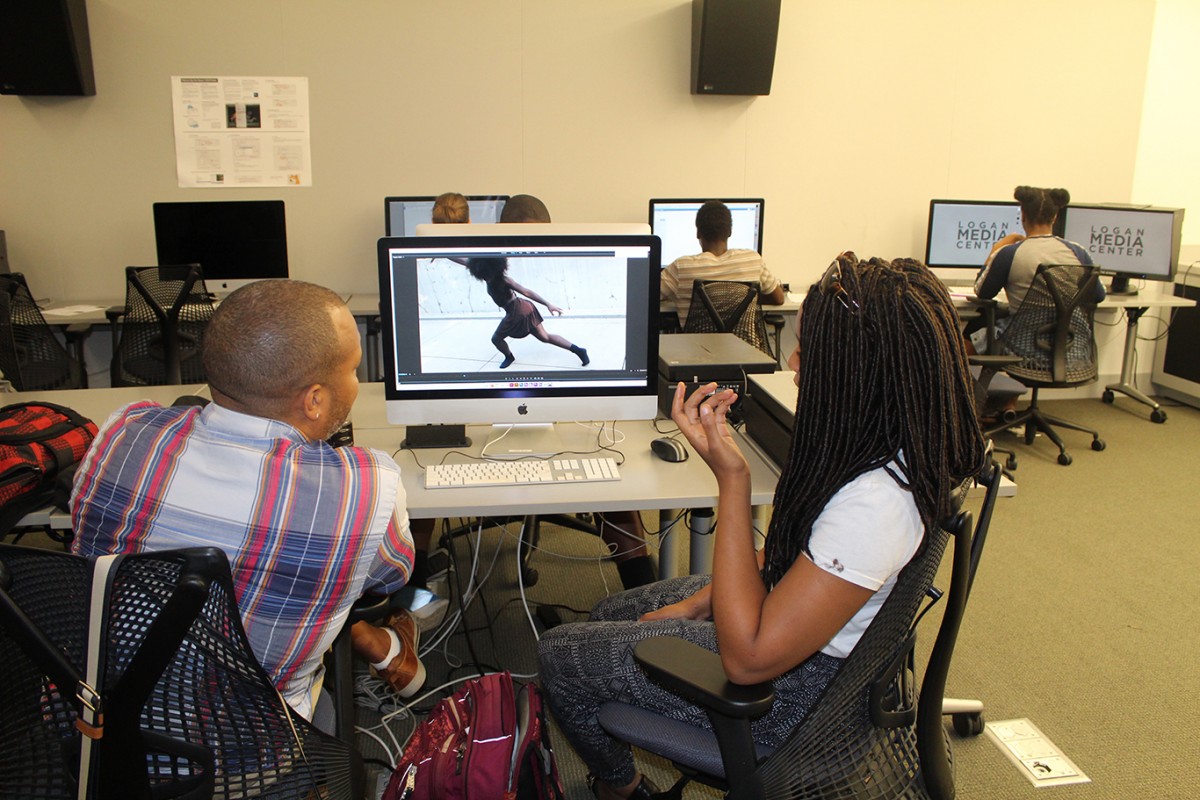
Celeste describing her film to Urban Gateways staff member Brian Foster
Chicago is often talked about in a very specific way by the media, by outsiders, and by higher-ups: the corruption among its political leaders, its struggling public schools, its rampant gun violence. Not often included in these conversations, however, are its residents – those most affected by these phenomena.
Art Options turns this singular narrative on its head. It gives Chicago teens opportunity and resources and encourages them to literally and metaphorically pick up the lens that’s so often pointed at them without their input or consent, and take the storytelling back into their own hands.
As Savage opens, the narrator challenges its protagonist: “I want you to close your eyes, child, and I want you to dream. Dream about anything. Dream, dream, dream, about the fields, the corns. Dream about…another place. A place you ain’t ever been before.”
Celeste’s film, Savage
To see more of the student films, check out their Vimeo page. You can even watch a short documentary of Art Options 2016.
Thank you to the following funders for supporting Art Options:
The King Family Foundation
Jim and Kay Mabie
